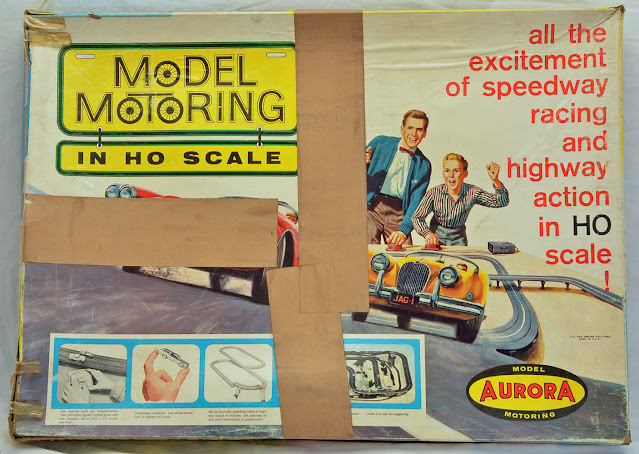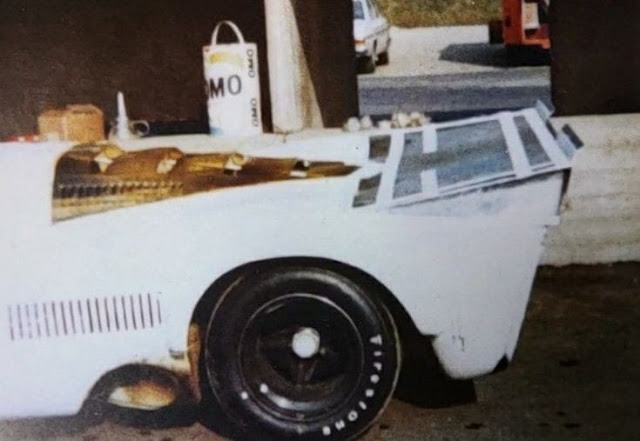December 26, 2023
#472
Gentle reader,
I'm in my 68th year on this earth and I was born a car guy. According to my mother, I could identify any car I saw, year, make and model, by age three. Methinks she exaggerates. But then, at that age we were living in rural Kansas, so how many different cars could there have been?
Dad was a preacher and most of our youth, we were quite poor. Yet, they still managed to get what we wanted for Christmas most years. One Christmas, to my brother's and my delight, they gave us an Aurora Model Motoring slot car set! It had two Jaguar XK120 cars, fixed head and roadster. Both featured drivers figures.
They read to all of us from a very young age, so all five of us are still avid readers. Weekly trips to the library were always fun. I loved books on cars and racing. So, I learned about Le Mans and it's 24 hour race and devoured books and magazine articles about sports cars and racing.
Have you ever seen these images?
The one directly above, I have known about for years. The one at the top, I had not seen until getting ready to do this article.
The images clearly show just how SMALL the fantastic Porsche 917 race cars are. The 914 was Porsches first mass-market mid-engine model. Jointly developed with Volkswagen, it was the entry model after the original 912 was dropped from the lineup.
Now, here's the funny thing. I staged my 917K #2 with my new 914 model, BEFORE finding the images above.
See what I did? I had them reversed! I had a good laugh over my foolishness, then had a thought:
I reversed the original images! Yes, I could restage and reshoot all the photos. But chose to go ahead with what I produced. Enjoy.
 |
| Both of these model do not open. The top does come off the 914, however. |
The 914 is marked VW Porsche which is how they were sold in Europe. In the US, it was only marketed as a Porsche.
One can really see just how narrow the cockpit roof is compared to the 914. It is my understanding that the 917's passenger seat was only bolted to the fiberglass floor and not secured to the tube frame like the driver's seat is. All to save weight for racing.
Oh, those sexy 917K hips!
This image clearly shows just how low the 917's drivers sit. Even with the headlights of a 914! This 914 has the 911's five-lug Fuchs wheels only used on the 914-6.
This is a good image of the "Kurtz" tail which JW Engineering mechanics came up with to tame the original long-tail 917's frightening handling at speed.
While the 917K is marked #2, the model's makers did not add the window let into the roof for the drivers to be able to see ahead while on Daytona's banked curves.

Sister 917K at Daytona for testing. Note the added window cut into the roof.
So, there you go. A brief look at my restaging of the two photos from 1970.
Below, some of the hundreds of racing images I have gathered over the years.
My first new car, a 1979 Chevrolet Monza, had a collapsible spare similar to the one Porsche mounted to the car to meet ACO requirements then. Each car must have a spare tire, tools and trunk or boot space. The latter is above both rear wheels.
Great shot which also shows how low the 917 prototypes are compared to a 911.
One of the 25 original 917s built to satisfy homologation requirements. They split the exhaust then. The front three cylinders on each side's exhaust exited the body in front of the rear tires. The rear six at the rear of the car.
This 914R finished 6th overall in the 1970 running of the 24 Hours of Le Mans. Quite impressive results!
John Wyer himself flagging #21 to a stop in the pits at Le Mans, 1970.
The only known image of an original 917 being transformed to Kurtz tail. Note the side exhaust outlet.
And, finally, a Porsche advertisement in German and English, for those looking for a new race car in 1969.
Thank you so much for taking the time to read my article. It means the world to me. Feel free to leave a comment below or on Facebook.
Scott Robb
December 26, 2023


























No comments:
Post a Comment